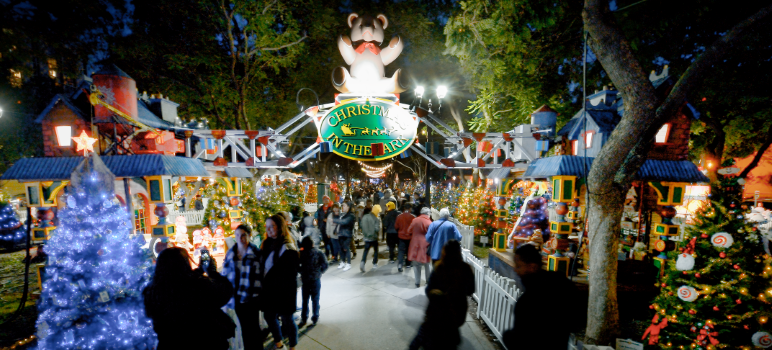In the late 1990s, the chief gardener at Hakone Gardens, a friend from college, recruited me to help turn around the declining 18-acre century-old park.
It had been rescued by the city of Saratoga in 1966. Though the city had done its best through the economic challenges of the early 1990s, deferred maintenance threatened some of the historic structures. Practices such as using remnant signage from the city’s maintenance yard for on-site wayfinding hurt the Zen vibe.
After becoming the foundation’s chair, I proposed that the city ink a 55-year lease with the foundation to curate the property. After some wrangling, Saratoga agreed, and the foundation assumed responsibility for operations.
The plan allowed the park to generate revenue through public events, a gift shop and rentals for weddings and memorials. It also provided a path to raise money from private donors and foundations, who, let’s face it, generally give money to the government only to avoid being hauled into tax court.

Hakone Gardens in Saratoga. File photo.
Two decades ago, the foundation’s annual revenues were in the low six figures. In 2021, according to its Form 990 disclosures published on ProPublica, Hakone generated a $1.7 million top line, with roughly half coming from operations, such as admissions and rentals, and the other half from donations.
A Golden Age for Parks
Spinning off parks from underfunded government departments to entities that work closely with them has created a “a golden age” for urban parks, according to the Trust for Public Land. Much of the credit is given to conservancies set up for some of the more prominent ones, like Manhattan’s Central Park and San Francisco’s Golden Gate Parks system.
Locally, the Guadalupe River Park Conservancy has welcomed more than a million visitors to San Jose’s Rotary Playgarden, which will soon double in size, with inclusive zip lines and new shade structures.

A new adaptive zipline is under construction at the Rotary Playgarden. Photo by Dave Lepori.
The trend towards public-private partnership management has sparked equity debates over disproportionate improvement of parks in wealthier communities. The counter-argument is that the private contributions free up limited government resources to support neighborhood parks.
“Central Park is not just the Upper East Side’s park, it’s also the world’s park and should be maintained to a special level,” Ed McMahon, a senior resident fellow at Urban Land Institute said. “Tax dollars that might otherwise flow to a Central Park,” he says, “are freed up to be spent in [New York’s] outer boroughs.”
In a 2015 article by Peter Slavin, “Making Park Conservancies Work,” McMahon notes that urban parks increase surrounding land values, which generate more general fund dollars from higher property taxes. He points out that New York state’s most valuable real estate is next to Central Park.
McMahon believes that parks have been viewed as amenities, not necessities, and been “underfunded and neglected for many years.” That’s changing, he says. Today “parks are an integral part of urban development” and the resurgence of cities.
New York City’s High Line “has revitalized an entire swath of lower Manhattan.” Parks like that, he says, “are not just a recreational amenity, but an economic development opportunity.”
Why Partnerships Work
One of the key architects of New York City’s park management model is Bryant Park Corporation chief Daniel Biederman, who recently visited San Jose. The San Francisco-based Park Programming Manager of his consultancy, James Kirby, weighed in on the notion of a conservancy for key San Jose parks, such as Plaza de Cesar Chavez. “By involving building owners, community members and other stakeholders in the management of the park, a private non-profit group would foster greater community involvement and investment in the park’s success,” Kirby says.

Daniel Biederman, who revitalized New York City’s Bryant Park, visited downtown San Jose in February. San Jose Inside photo.
Biederman says that a park management organization should operate on its own profit and loss statement, which “allows the city to fund neighborhood parks more generously—no city money is the aim.”
The park entity he established in 1980 in New York City has been a model of self sufficiency. “Bryant Park achieved this in 1997, five years after opening,” Biederman said.
“Foundations and individuals are more likely to write checks in support of park operations and maintenance to a 501(c)3 than to a city general fund account,” Biederman notes.
Plaza de Cesar Chavez
Little has been done to improve Plaza de Cesar Chavez since the Redevelopment Agency renovated it in the 1980s, with a small stage and artesian fountains. The park, however, continues to draw visitors downtown to enjoy community events and musical performances, skateboard or sit on a park bench.
It’s time for a new master plan to upgrade the park, which will be surrounded by more than a half dozen new high rises if plans by developers Jay Paul, Sobrato and others come to fruition.
Without investment—and public monies are needed for public safety and neighborhood needs—the region’s first plaza will just age and decline. With a non-profit partnership, it can once again be the center of San Jose, as it was in the pueblo days.
Dan Pulcrano is an organizer of The Plaza Conservancy, a newly formed non-profit public benefit corporation to support San Jose’s Plaza de Cesar Chavez. He produces the Music in the Park series that is held there and is executive editor of the media group that includes San Jose Inside.


disconnected?
Yeah no. The Highline, Bryant Park are all in desirable areas that people want to visit. And there is tons of big money in NYC. SJ? Not so much.
One thing I wonder about nonprofits is when they get involved in an election campaign. The rules seem clear that a 501(c)(3) can’t contribute to individual campaigns, only to issue campaigns, which include tax and bond measures. Then there are limits on what percentage of their assets they can contribute to political campaigns.
More and more public schools, parks, and libraries have associated private foundations. When these foundations back tax and bond measures, some donors are surprised to see where their donations are spent while others are delighted to be able to launder their political contributions as charitable donations.
A couple examples I’m thinking of were a $250 million school bond measure with a private foundation contributing $250,000 to the Yes campaign and a $10 million parcel tax measure with a parks foundation contributing $10,000 to the Yes campaign. I might be inclined to support those foundations, but if their mission turns out to be leveraging $1 of campaign contributions into $1000 of taxes, then count me out.